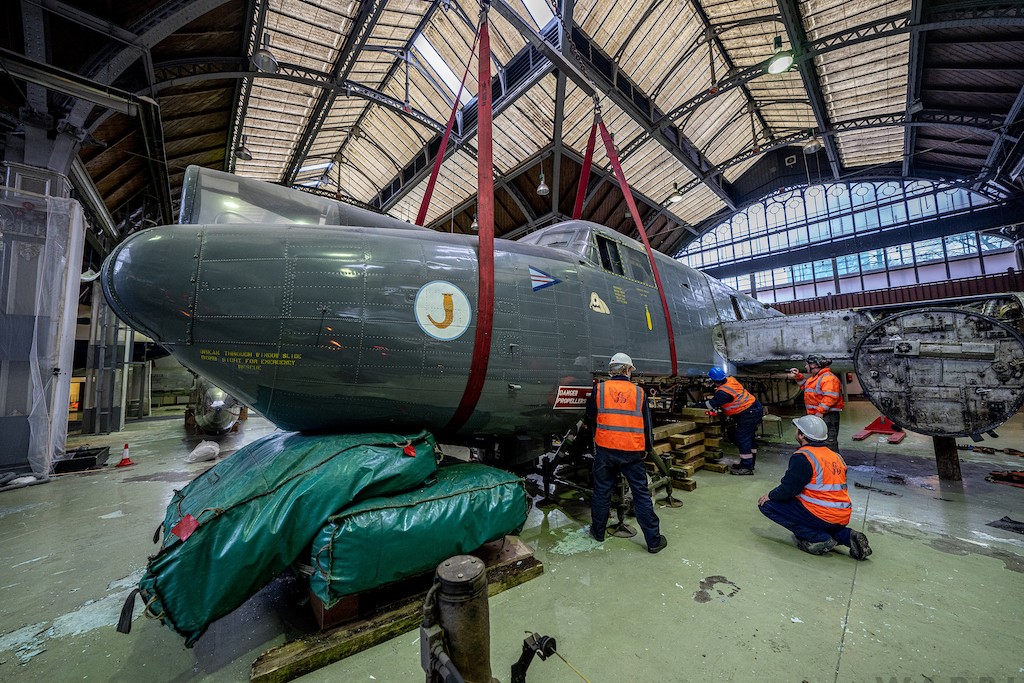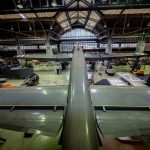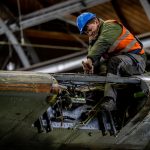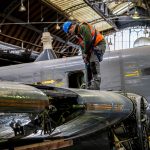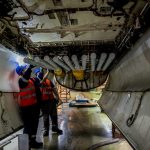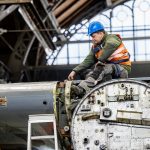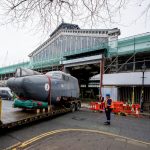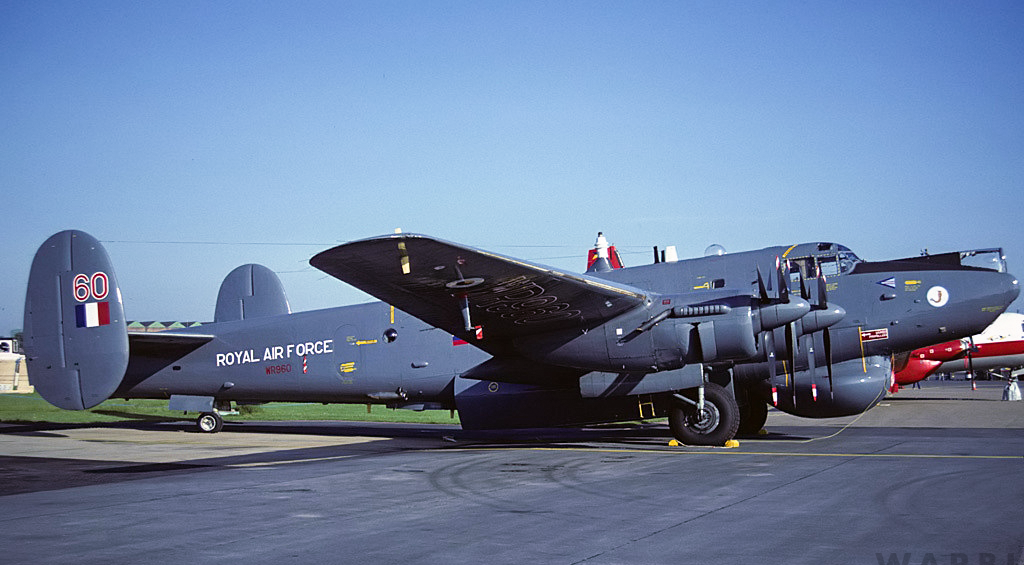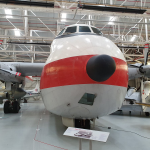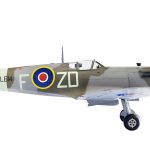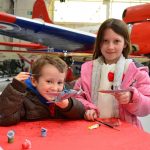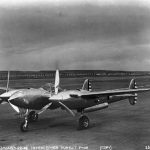The Royal Air Force Museum’s Avro Shackleton AEW.2, WR960, recently had to move from its long term home at the Science and Industry Museum in Manchester, England. It will eventually go on display at the Avro Heritage Museum in Woodford, Cheshire. Interestingly, this facility sits upon the grounds of the old A.V. Roe & Company factory from which WR960 first flew back on February 5th, 1954. Unfortunately, the Avro Heritage Museum does not presently have a display building big enough to house the fully-assembled Shackleton at present, so she will go into storage disassembled for the time being, but thankfully indoors.
The reason for this somewhat precipitous move is that the Science and Industry Museum decided last year to close its Air & Space Hall which had housed the beautifully preserved, former Airborne Early Warning (AEW) patrol plane since 1983. Also displaced by this reluctant decision were numerous other historic airframes and artifacts which have had to find new homes as well. The reason behind the Air & Space Hall’s closure was simply one of economics, as the building, despite its magnificence, is approaching its sesquicentennial and in dire need of major repairs – the budget for which the non-profit museum could not justify. As a result, they have vacated their lease of this magnificent building, erected back in 1878 to serve as the Lower Campfield Market Hall, and returned the structure to its owners, the Manchester City Council.
GJD Services Ltd., which specialize in moving complex objects, and large aircraft in particular, were involved in the airframe’s disassembly and transport to Woodford; they appear to have performed this task admirably, as the images below should attest.
The Avro Shackleton traces its roots all the way back to the Avro Manchester, forerunner to the magnificent Lancaster bomber of WWII fame. It emerged as a maritime patrol and antisubmarine bomber during the early days of the Cold War and could also assist search and rescue missions. Much like its American contemporary, the Lockheed Neptune, the aircraft could fly for extreme durations of up to 24 hours. While most Shackletons flew into retirement during the 1960s and early 70s, a dozen examples were set aside for conversion into AEW platforms. This was a stop-gap measure, introduced in 1971, which cobbled together the AN/APS-20 search radar radars (from retired Royal Navy Fairey Gannet AEW.3s) with redundant Shackleton MR.2 airframes to provide Britain with Airborne Early Warning coverage while the more modern and sophisticated – ultimately too sophisticated – Hawker-Siddeley Nimrod AEW progressed from promising prototype into production. The latter program proved to be a nightmare, dragging on into the late 1980s with no solutions in sight; the Shackleton AEW.2 soldiered on admirably until 1991 when the RAF finally axed the Nimrod AEWs and bought Boeing E-3D Sentry’s instead.
WR960 underwent its conversion from MR.2 into an AEW.2 during 1971/1972, with No.8 Squadron taking her on strength at RAF Kinloss on June 7th, 1972. She retired from military service at RAF Cosford on November 22nd, 1982 and arrived for display at the Science and Industry Museum in Manchester on January 27th, 1983 – coincidentally, exactly 39 years ago today! Hopefully the aircraft will have an appropriate building to display her fully at Woodford before too long; this important airframe, the only one of its variant preserved indoors, must have a secure future.







